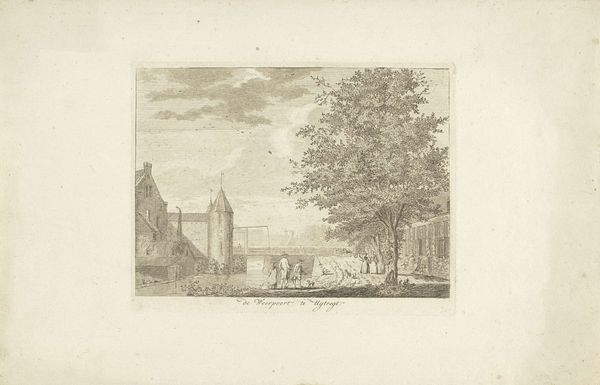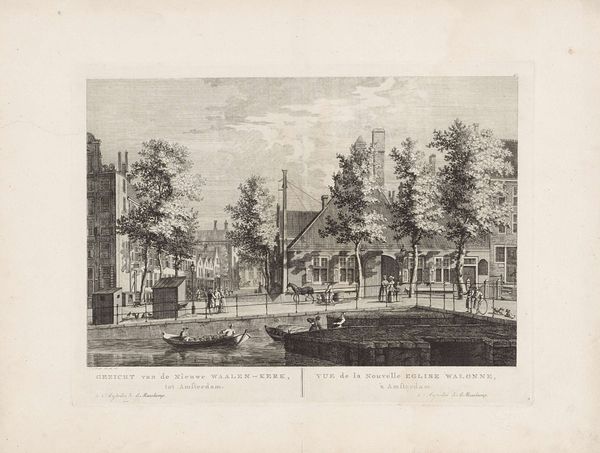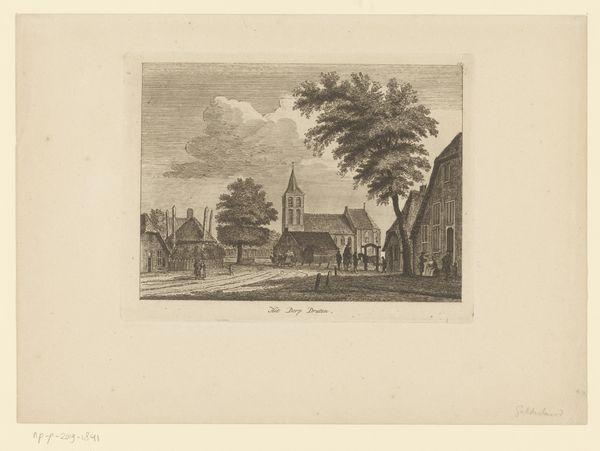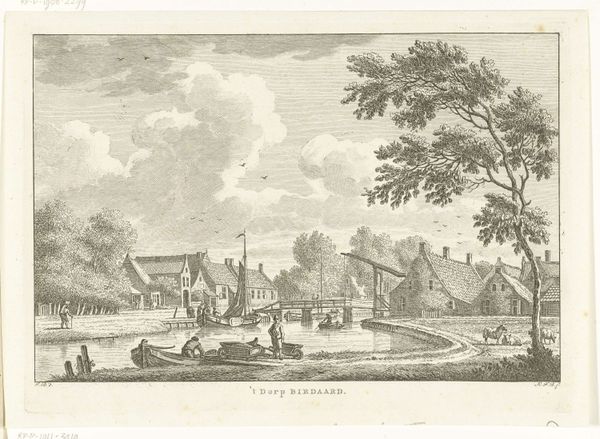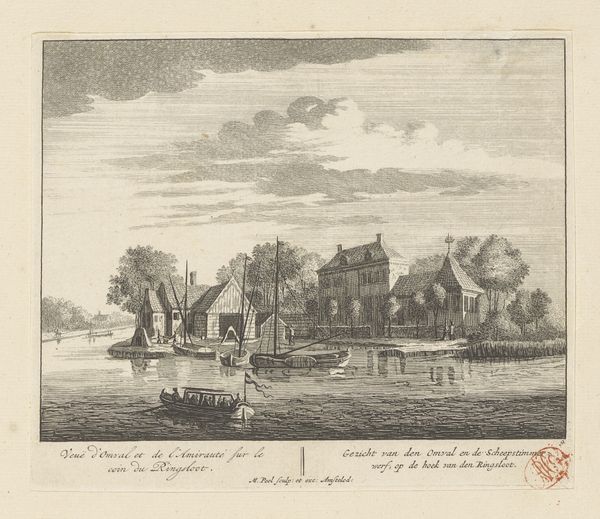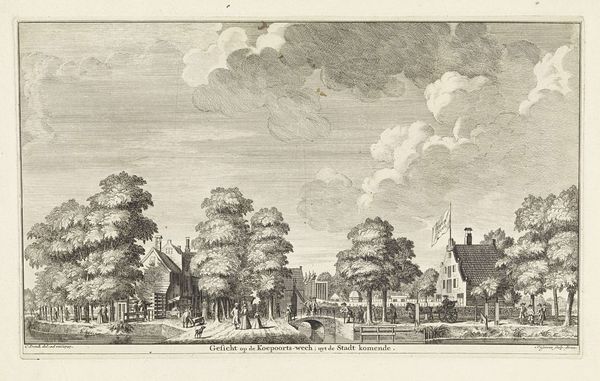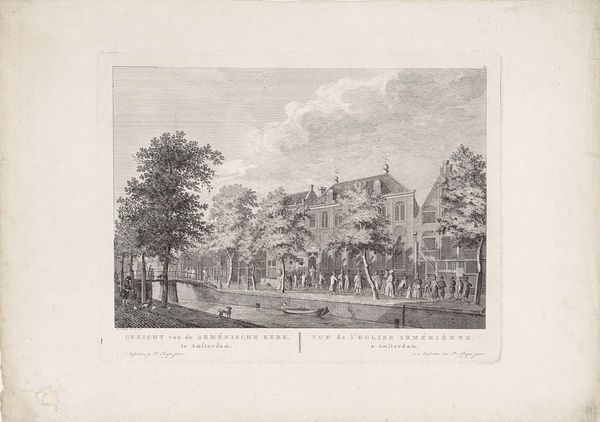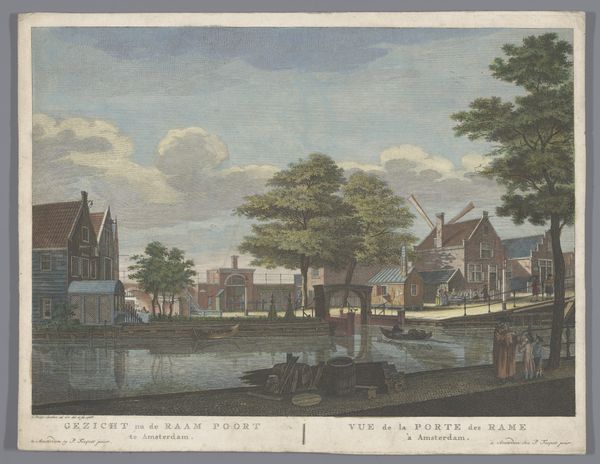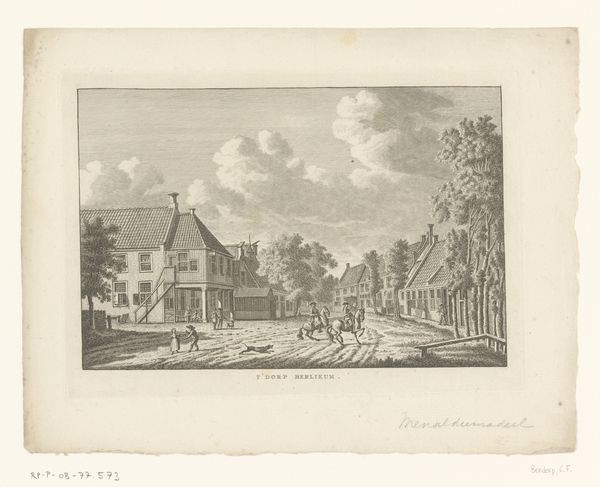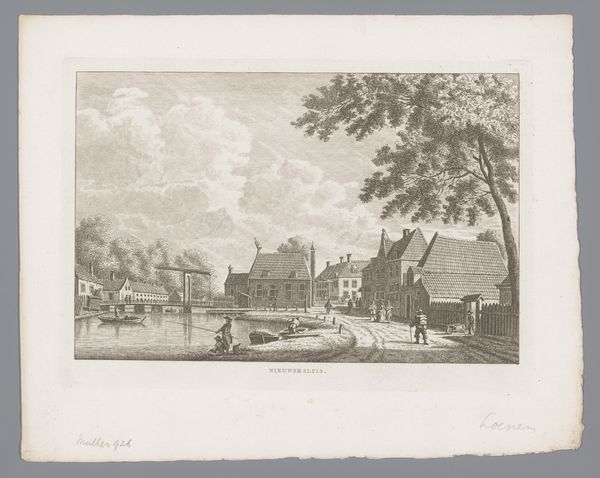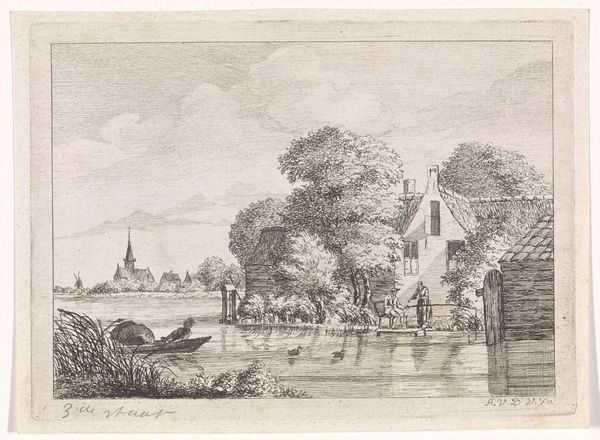
print, engraving
#
dutch-golden-age
# print
#
old engraving style
#
landscape
#
pencil drawing
#
cityscape
#
engraving
#
realism
Dimensions: height 280 mm, width 361 mm
Copyright: Rijks Museum: Open Domain
Editor: So this is "Gezicht op de Raampoort te Amsterdam," made sometime between 1766 and 1783 by Caspar Jacobsz Philips. It's an engraving, so it's got this crisp, detailed look. I'm struck by how calm it feels. It’s like a perfect little scene. What stands out to you? Curator: I’m drawn to how the water functions as a mirror. In so many cultures, water symbolizes not just reflection, but also memory and the subconscious. This isn’t just a placid view; it’s an echo of Amsterdam itself. Do you see how the light catches the water? Editor: Yes, it's almost like the light animates the water, bringing life to the whole engraving! Curator: Exactly! And notice the windmill in the background. In Dutch art, windmills often symbolize industry, progress, but also the ephemeral nature of life. Consider, too, the people grouped to the side. Are they welcoming someone, or perhaps bidding farewell? It adds a layer of narrative, hinting at the stories that play out within the cityscape. It brings that windmill as an icon of a nation’s strength into a connection to everyday life. Editor: That makes me wonder about the people in the boat as well – where are they going? Curator: Precisely! The image operates on multiple symbolic levels. What initially seems like a simple landscape is rich with encoded meanings about labor, memory, and community, connecting a sense of national identity with everyday life in Amsterdam. These recurring images are a source of cultural memory that link contemporary citizens to the past. Editor: That's amazing, I would not have picked up on any of that initially! Thanks for sharing your insights! Curator: It’s been a pleasure!
Comments
No comments
Be the first to comment and join the conversation on the ultimate creative platform.

